РУССКОЯЗЫЧНАЯ ВЕРСИЯ ПО ЭТОЙ ССЫЛКЕ. CLICK HERE FOR RUSSIAN VERSION.
06 February 2019
Today has been a particularly busy day, and the weather played up very well: the forecast that promised non-stop rain turned out wrong, and it actually only rained in the morning while we were still on the bus on our way to the tour around the main sights of Istanbul’s Old City.

Surprisingly, although we had reserved yesterday’s and today’s tours on different websites, we were greeted by the same guide as yesterday, Muzaffer, in our English-speaking group. Apart from us there was also the same Indian couple as yesterday and an Irish family. Looking ahead, I will say that after lunch we were joined by another couple from Hong Kong and some British Indians.
The day started getting a spiritual direction right from the start – from the Hacı Beşir Ağa Mosque. It is small, not particularly remarkable, but it is where we were explained how to behave in a mosque (believe it or not, I hadn’t been to one before!): there is an obligatory requirement to take shoes off and, for women, to cover their head with a scarf. The mosque itself was closed, and we could only look at its interior from the upper floor for women. What was interesting to see was a special chamber, where a believer would spend the night before having to make an important decision, praying for Allah to send them a clue in a dream.
Next followed one of Istanbul’s main features – which became especially famous after the Magnificent Century TV series – the Topkapi Palace. It is constructed on the first of the seven hills of Istanbul and dominates the surrounding area. As we entered the very first room – if I remember correctly, it was the Imperial Council, or Dîvân-ı Hümâyûn – we immediately understood why the Dolmabahce Palace, despite all its pomp and splendour, didn’t cause a storm of delight. The domes, the paintings and the décor of Topkapi are much stricter, more harmonious and, one might say, more majestic. What I see here is spirituality vs. Dolmabahce’s depersonalised grandeur. And all this despite the fact that this palace’s harem was not included in our tour.
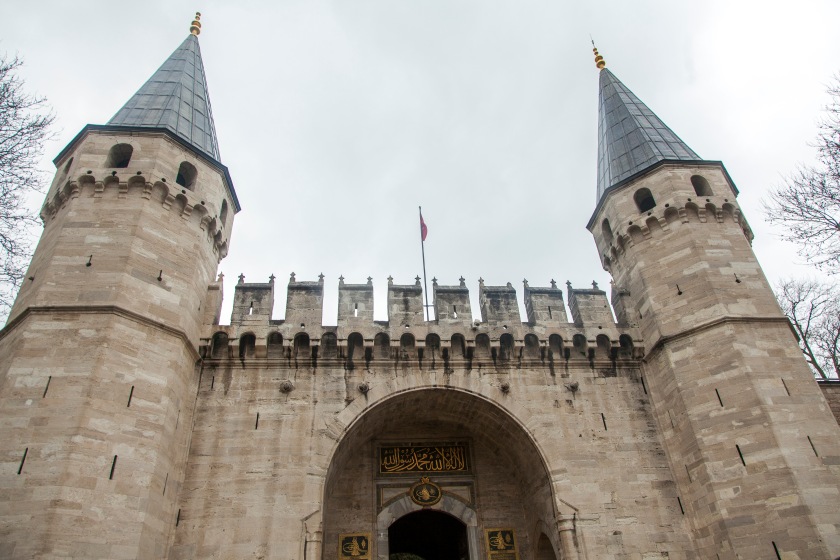

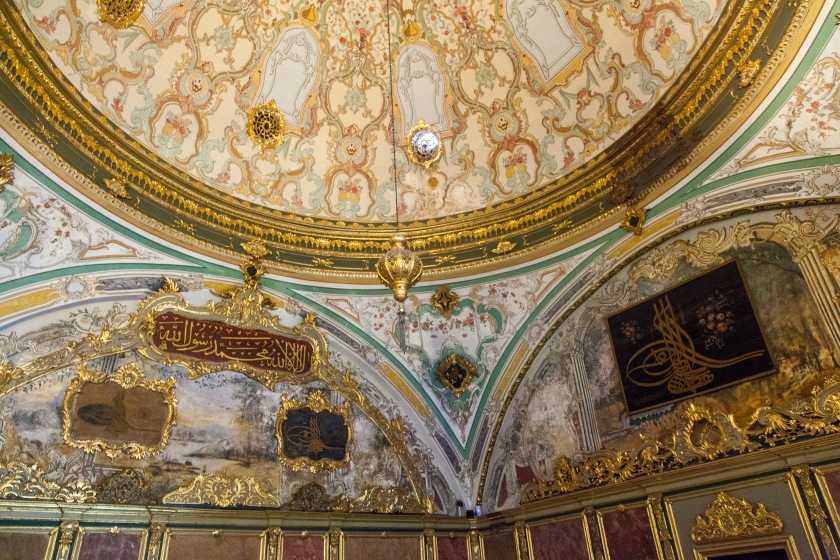
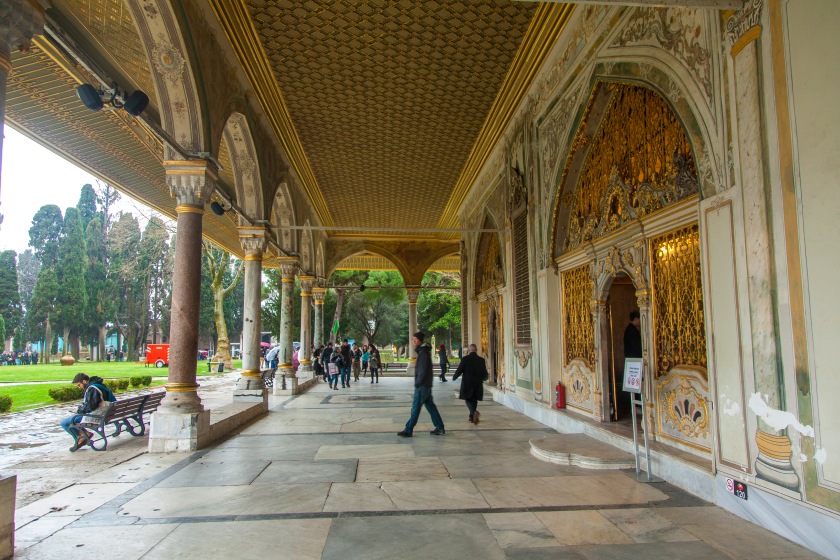

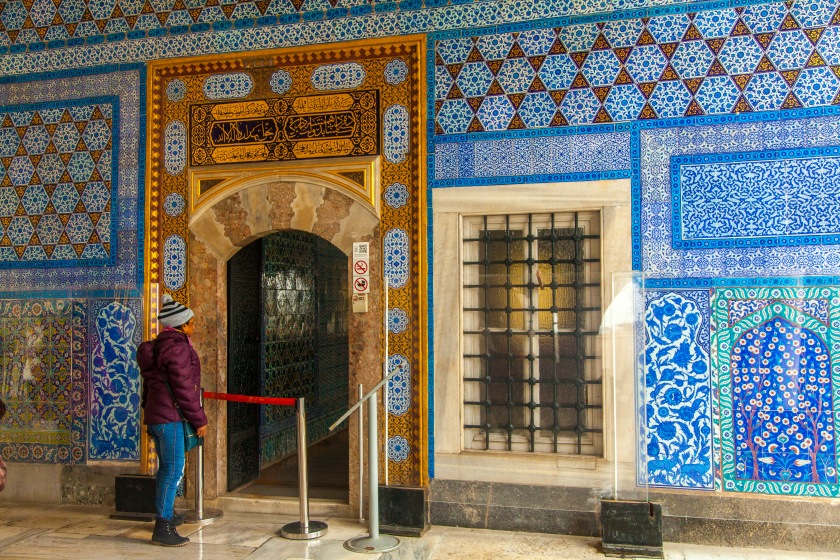
There are four gardens in the palace complex – the first two are external, while the third and fourth are internal, and the latter was only reserved for the closest members of the sultan’s household. Photography is allowed in many parts of the palace, but not in rooms with expositions – which is a shame, given that they contain the most interesting things!
First of all, there is a magnificent collection of clocks and watches – both from Turkey and Western Europe, from small pocket watches to tall grandfather clocks. Next, there is an extensive collection of weapons – mostly local Ottoman ones (such as firearms, bows, swords, yatagans, chain armours, shields, helmets, including those for horses), but also trophy and gifted weapons. For us it was particularly interesting to see Safavid weapons among the last (or maybe the penultimate!): who knows, it may have been my ancestors who used it! At the same time, we couldn’t help having a strange feeling, that today we are walking around this exposition and looking with great interest at something that once presented a mortal danger and was created to kill people.
The next exposition consists of huge kitchen premises, which were used for preparing food for six thousand people. And nowadays they contain a collection of ceremonial tableware and kitchen utensils. We found the latter more interesting, since they are functional, as for tableware — well, it’s just tableware!
We were really impressed with the collection of religious relics – at one point the sovereignty of the Ottoman Empire extended over Mecca and Medina, making it inherit the status of the caliphate, as well as Jerusalem. Not surprisingly, it was in its capital that a collection of items belonging to the prophet Muhammad (weapons, personal belongings, even beard hair and teeth) and his closest entourage, as well as other prophets — for example, the staff of Moses and the sword of David — was collected.
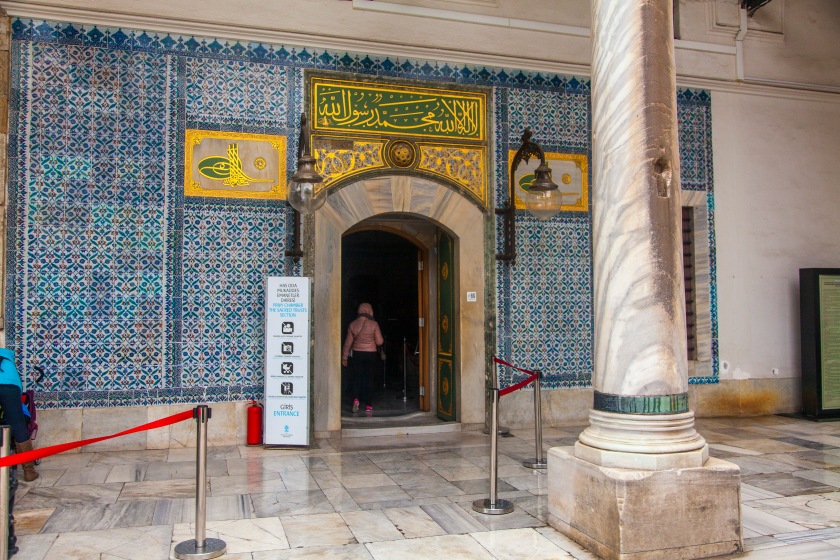
We also really liked the library of Sultan Ahmed III, in the midst of which there is the sultan himself (well, obviously a figure!)



The last exposition we got to see contained the portraits of all the sultans, but this one was probably the least interesting. From the palace, where we spent about two hours, we went straight to lunch, which was very well organized. In general, the impression is that restaurants in Istanbul are often placed on the top floor of a hotel to provide a beautiful view. So there we sat, eating delicious mezes and kofte, drinking tea and admiring the views of Istanbul and the seagulls proudly sitting on the roofs.



After lunch, now in a bigger group, we headed to Hagia Sophia. This place is truly unique, bringing together values that are almost incompatible by modern standards. Outside, it is very clearly visible that the minarets are attached to a Christian church. However, the building itself does not look particularly outstanding. Looking ahead, I will say that the Blue Mosque, located directly opposite, is much more beautiful on the outside.
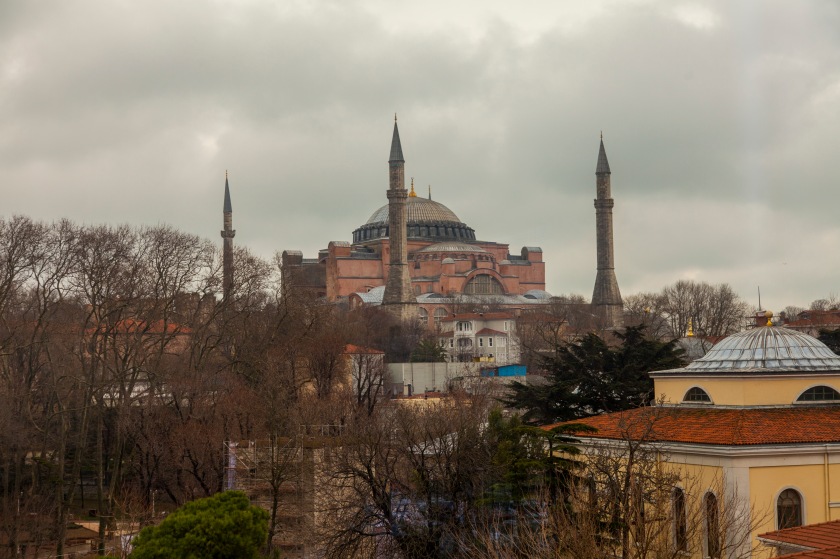


However, the interior of Hagia Sophia is stunning. Despite crowds of tourists – as always, mostly Chinese – you get a feeling of extraordinary holiness and admiration for the fact that the images of Christ, the Virgin Mary, the first Roman emperors and the symbols of Islam peacefully coexist in this place.




In fact, this has not always been the case. At first, Sultan Mehmed II, who conquered Constantinople, simply ordered the main Christian cathedral to be turned into a mosque, covering the Christian images with plaster. They weren’t cleared until 1935, when by a decree signed by Ataturk, Hagia Sophia became a museum.
The happy free cats of Istanbul feel great here as well, causing a smile, which somewhat dilutes the sublime feelings evoked by the place.
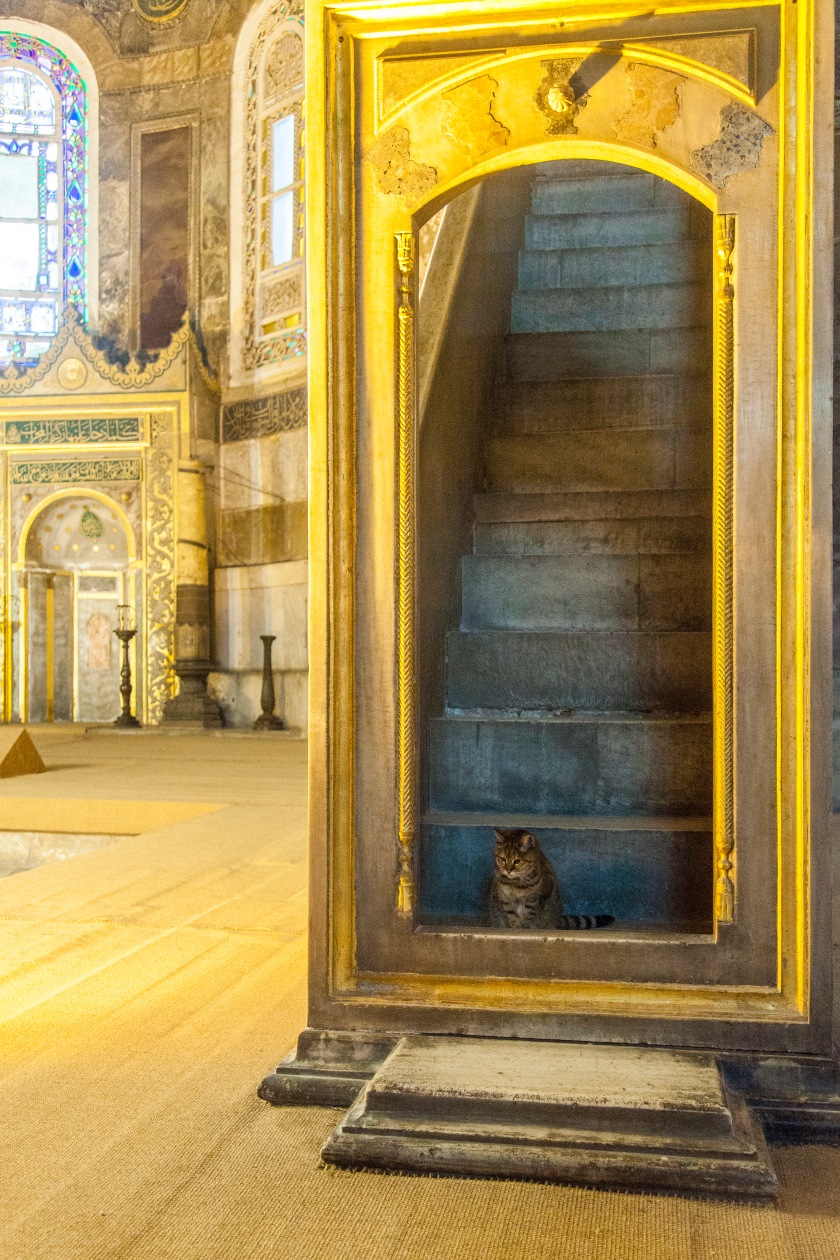

The Blue Mosque, aka the Sultanahmet Mosque, as already mentioned, is very beautiful outside. It has as many as six minarets (usually, there are one, two or four). But unfortunately, there was almost nothing to look at inside – there is renovation going on, so, for instance, the dome is completely covered. Since, unlike Hagia Sophia, this is a functioning mosque, there are a separate entrance and exit for tourists, who therefore have to carry their shoes with them in specially provided plastic bags.



To finish with the mosque topic, I will say that there are more than two thousand of them in Istanbul. This seems like a huge number, but is actually normal for 20 million people.
We had thought that the Hippodrome – our next destination – was a visit to some ancient sports facilities or its remnants. It turned out to be even more than just remnants, located right here, at the Sultanahmet Square: there is only one Egyptian obelisk and two Greek columns, one of which is made of weapons and armour of the defeated Persians.


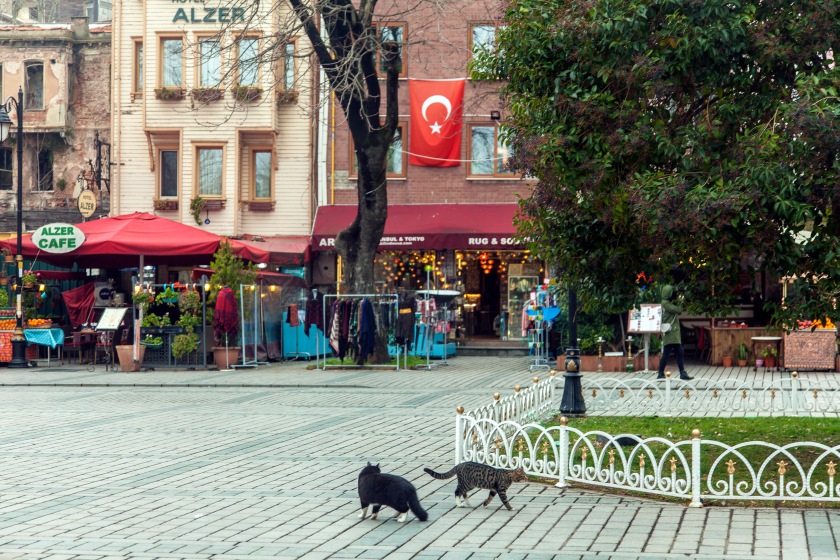
And finally, the last destination of our tour is the Grand Bazaar, or Kapalı Çarşı. The visit was preceded by a meeting with experts of Turkish carpet weaving, which we had in the Istanbul Handicraft Centre not far from the Bazaar. They treated us to apple tea, piled up a bunch of carpets in front of us and explained the difference between the local and, say, Persian technique(double knots instead of single ones). Of course, this was done with an eye to enticing us to purchase carpets, but no one in our group was willing to. At least us, the Azerbaijanis, could hardly be tempted by carpets.


We had 40 minutes to explore the Bazaar itself, but in fact that was more than enough. Frankly speaking, yesterday’s Spice Bazaar impressed us a lot more, because Kapalı Çarşı, although of course much bigger, seemed less beautiful and more chaotic. We walked through one of the galleries back and forth and found that this “drop” was enough to appreciate the entire “sea” of the Grand Bazaar.
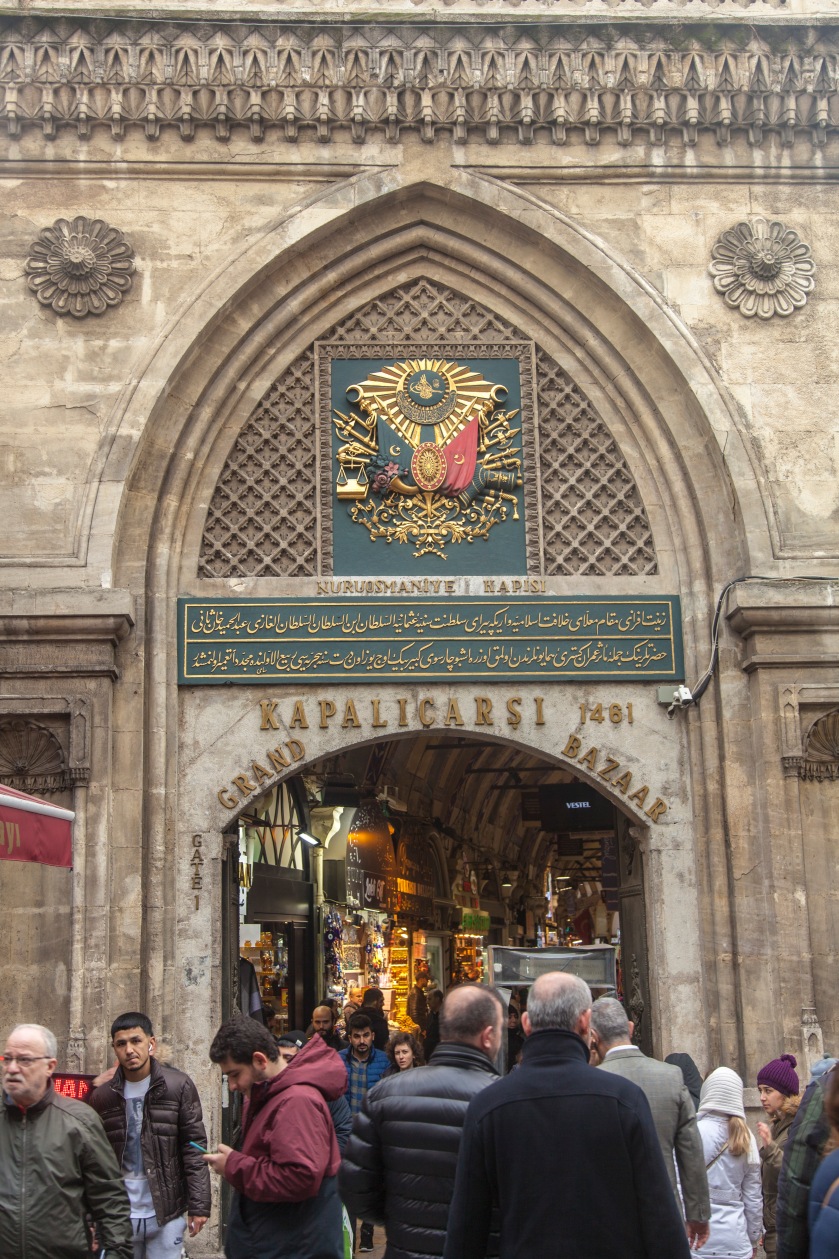


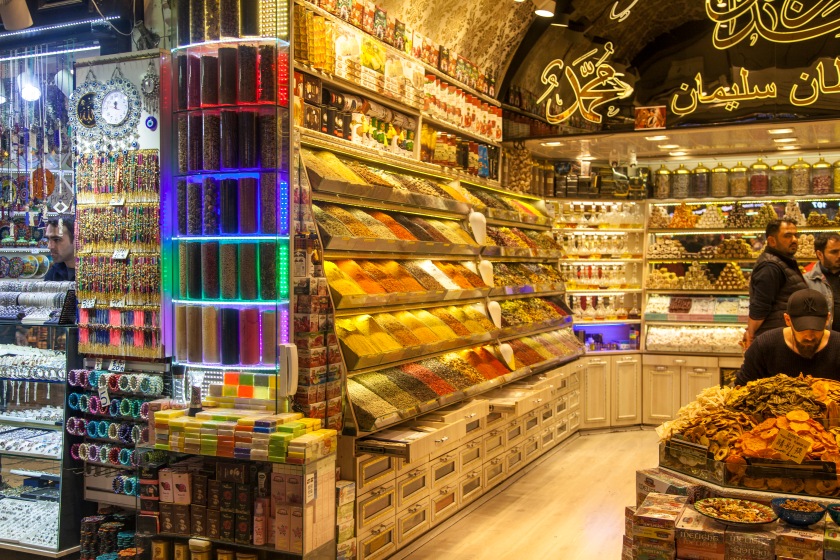

Moreover, even though the day had been very interesting, it had also been exhausting, so our bus, which accurately dropped us off at our hotel, seemed to be the most tempting place.

We were so tired that for dinner we found a restaurant literally around the corner from our hotel, and made a right choice: it was very nice and cozy with delicious food and great service.
